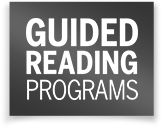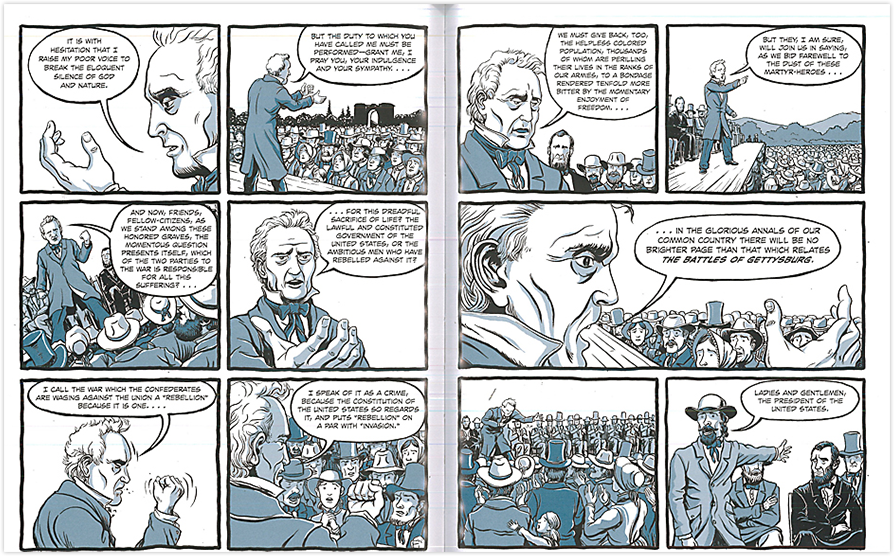Q&A With Gay Su Pinnell
What Do Good Readers Do?
Good readers choose to read a wide variety of materials—biographies, novels for enjoyment, novels to challenge and inspire us, directions to find out how to put something together or cook, or newspapers and magazines to find out about current affairs or investments. Today's workplace demands many different kinds of literacy. Good readers do not simply "practice" reading; they have a range of purposes and objectives.
Good readers learn from their reading, and as they do so, learn more about reading. Think about reading a new author, for example, or reading about an unfamiliar topic. As you read, you gradually learn more about how to read that piece of writing. You become accustomed to the author's style and catch subtle meanings. Or, you bring more general and specific knowledge to your reading of the topic so that you can understand the text. As an adult, you have a system for reading that constantly expands and improves; in fact, we call this system a self-extending system, one that enables you to keep learning (Clay, 1991).
How Can I Help My Students
Become Good Readers?
For most children, becoming a good reader means having access to good teaching and to materials that will support the development of a self-extending system. Effective literacy programs offer a wide range of activities that support learning, including:
- Reading aloud to help children understand the structure of written language, expand their knowledge of words, and learn new ways of using language
- Individual reading to help them become independent, get more practice, and choose books for themselves
- Instructional reading, which involves a carefully designed program to help readers expand their skills and strategies.
A key factor in the development of a self-extending system is supported by the reading of books that offer just the right level of support and challenge. When books are matched to readers, the young reader can continue the successful processing that builds the system.
How Can I Provide a Context for Reading?
Many teachers today teach reading in small groups, a process called "guided reading." A small group of children who are similar in their development at a particular point in time share a brief group-reading lesson each day. As children learn more in their individual ways, the membership of these flexible groups changes.
Of course, guided reading is only one of the settings in which children learn to read. During the rest of the language arts periods, they are also hearing literature read aloud, engaging in literature discussion groups, getting a great deal of independent practice, participating in lessons on words, discovering how words "work" through active inquiry, and engaging in a variety of writing experiences, all of which contribute greatly to reading. Guided reading, however, provides a great setting for matching books to readers.
The teacher selects a text that is just about right for the group and fine-tunes the text selection with an introduction. The introduction is brief but very important because it sets the scene for reading and supports comprehension from the start. Then, members of the group read the whole text softly or silently to themselves at the same time but not in chorus. During reading, the teacher observes behavior and interacts with individuals. Afterward, the teacher makes several teaching points based on observation. Successful instruction in guided reading depends on selecting appropriate texts day after day. If you are beginning to use small-group reading instruction in your classrooms, you will find it very helpful to have books organized along a gradient of difficulty.
What Is a Leveled Book Collection?
A leveled book collection is a large set of books organized in levels of difficulty from the easy books that an emergent reader might begin to the longer, complex books that advanced readers will select. In some schools, the collection is housed in a central area. There are multiple copies of many books. There might be 10 levels per grade for Grades K–1 and three or four levels for each later grade.
A leveled book set has several advantages, including the following:
- An organized set of books makes it easier to select books for groups of children.
- Having a gradient of text provides a way to assess children's progress over time.
- A book collection is established that does not need to be replaced but is revised and expanded over time.
- As the collection expands, the varieties of text provide opportunities for children to increase their reading power through experiencing diverse texts.
It is also crucial to provide variety within each level. Readers who experience only one kind of book may develop a narrow range of strategies for processing text. Instead, we want young readers to use their skills in a flexible way for many different purposes.
A leveled collection may be constructed simply by gathering a large set of books and working with colleagues to evaluate the texts. Using your experiences in teaching children, you will find that you can place books along a continuum of difficulty. Of course, your initial rankings should be tested with children over a period of time. Gradually, categories will become more stable. Many groups of teachers have worked with their collections over several years, periodically coming together to discuss books, revise levels, and add new books. As you discuss books, you will discover that you are also talking about the children and their reading behavior. You will be getting to know both the books and the readers.
Some Criteria for Leveling Books
No single aspect or characteristic of text can be used to evaluate reading material. In placing a text along a gradient of difficulty, many factors are considered.
- Length—Consider the number of pages, the number of words, and the number of lines on the page. Books for beginners will have just one or two lines on a page.
- Layout—Beginners need texts with a large font and clear spaces between words and lines. Sentences begin on the left, and print is clearly separated from pictures. In more complex books, sentences begin in the middle of lines or are carried over onto the next page. Fonts become smaller.
- Structure and Organization—Early books have simple plots and some repetition. Some books use repeating episodes or complex plots organized chronologically. As books become more challenging, more interpretation will be needed.
- Illustrations—Easier books provide pictures to support the reader in gaining meaning and solving words. Picture support gradually decreases as you move up the gradient of difficulty.
- Words—Beginning books use high-frequency words, text with regular spelling words, and content words reinforced by pictures. More challenging texts use multisyllabic words and a wider range of vocabulary to express meaning.
- Phrases and Sentences—The gradient begins with very simple sentences and goes on to include longer, more complex sentences with embedded clauses.
- Literary Features—Consider the complexity of the ideas. What must readers understand about the characters, setting, and plot to read this book with understanding? Literary features such as flashbacks or metaphors may introduce a challenge.
- Content and Theme—Books for young children will focus on topics and themes that are familiar to them. Complexity gradually increases to ideas and topics that children would not experience in their everyday lives. Some sophisticated themes require maturity for understanding, may mean that a book is more challenging, even if other factors make it seem easy.
References
Clay, Marie M. Becoming Literate: The Construction of Inner Control. Auckland, New Zealand: Heinemann Education, 1991.
Fountas, Irene, and G.S. Pinnell. Guided Reading: Good First Teaching for All Children. Portsmouth, NH: Heinemann Educational, 1991.
Fountas, Irene, and G.S. Pinnell. Matching Books to Readers: A Book List for Guided Reading, K–3. Portsmouth, NH: Heinemann Educational, 1999.













